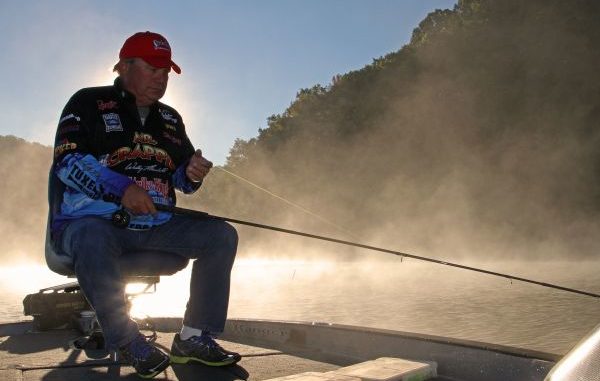
Locating schools of crappie as temperatures fall is a matter of looking for baitfish along channel edges. Then it’s game on.
December has Dennis Tietje on edge, and it’s not because of any Christmas rush.
No, the Toledo Bend crappie guide just knows that his little, freckled targets are most likely going to be found along the boundary of river and creek channels — essentially, the edges.
“As water cools, the crappie start leaving the brush piles, and they move out to the river channels or creek channels,” Tietje said. “They’re following the bait, and the deeper channels are generally the best.
“Look at the edges from 21 to 28 feet. They’re going to hang on those break lines. They’re very easy to pinpoint once you find them.”
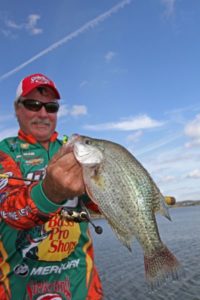
Tietje said this pattern holds true for just about every inland lake, but also down south in the marshes from Bayou Black to Venice. That’s a different scenery, but the same principle applies.
“You can take the marsh and treat it like a lake,” Tietje said. “Instead of a river or a creek channel, they’ll move to the deepest canals they can find. They won’t be up on the flats.
“No matter what, they’re going to follow the bait, and the bait will be moving to the edges of the channels or canals — so that’s where the crappie will be.”
But don’t tarry getting out on the water.
“Normally, I look for a good daylight feed,” said Jerry Thompson, who also guides crappie anglers on Toledo Bend. “There might be times when you have an active period up in the day, but usually I don’t expect much after noon.”
Tietje agreed, explaining that everything revolves around what crappie are eating .
“What happens is, during the middle of the day, the baitfish tend to move off the edges of the channel and suspend,” he said. “I think if you had a more confined area, your bite would last longer.
“It’s not that the fish aren’t feeding, they’re just harder to locate.”
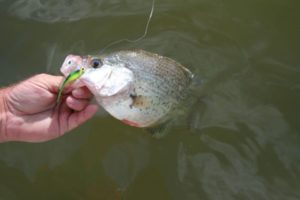
Addressing meteorological variables, Thompson said heavy winter rains can be problematic for crappie seekers. Discolored water isn’t so much the concern for the depth the fish are usually holding in; instead, current is the real vexation.
A good push of water can temporarily scatter bait and crappie, so plan on a little more looking on the days following a downpour.
As far as cold fronts go, Thompson said declining temperatures are more of an angler comfort issue than a concern for fish sitting 20 to 30 feet deep.
That being said, strong winds associated with the typical front can create challenges for boat positioning.
“In the winter, they’re so deep that fronts don’t affect the fish,” Thompson said. “Some of our best days on TB have been when it’s snowing, and that hardly ever happens.
“The wind is the problem, because it can make it hard to stay on top of a school of fish.”
T-shirt days might be few and far between this time of year, but Tietje definitely expects a spike in activity during a nice warm up.
For the cold season, Tietje offers fish small tubes because baitfish are on the scrawny side this time of year.
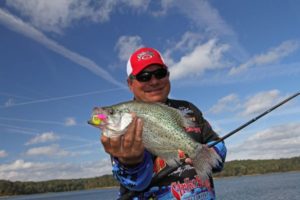
Curl tails are also effective, as are subtle baitfish bodies like Strike King’s Lightning Shad.
With any of these plastics, Tietje finds a 1/16-ounce jighead sufficient to reach the hard channel edges.
As for colors, Thompson said lure visibility is the key.
“I like something bright like chartreuse/white, blue or red,” he said. “I think they can see those colors better in deep water.”
For bait deployment, Tietje said consistency is the name of the game. There might be times of the year when crappie will chase lures, but this is not it.
So take your foot off the gas and you’ll do much better with these edge fish.
“Generally, the rule is: I’ll drop my jig right to the bottom and reel up two cranks,” Tietje said. “That keeps my bait in the zone of those fish.
“The longer that bait stays in front of the fish, the better your chances of getting bit than a bait that’s just traveling through.”
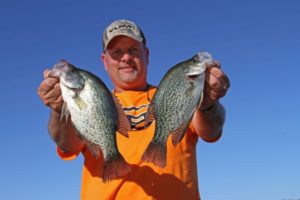
In terms of simplicity, artificials keep the game moving with less muss and fuss. But don’t hesitate to drop a minnow to crappie on the edge; a piece of meat is a piece of meat any time of the year.
Thompson likes a No. 2 hook, and he goes with a long shank because it’s easier to grasp in a fish’s mouth.
Tietje, on the other hand, prefers a 1/16-ounce Strike King ball jighead over the hook and split-shot rig. Not that the latter won’t work, but when bottom impediments persist, he finds he fares better with a streamlined package.
“It falls as one unit,” Tietje said of the minnow rigged on a jighead. “A lot of these ledges have scattered structure, and this is easier to get around all that. It’s just easier to fish.”
Moreover, what a hook and split shot allow, while certainly not a bad thing, is just less critical in the cold season, he said.
“The bait’s ability to swim around is not as important because the bait is lethargic this time of year,” Tietje said. “That fish is just going to swim up and suck in that minnow when it’s just sitting there.
“During the winter months, the fish are going to take the easiest course to a meal. So this technique plays right into their feeding style.”
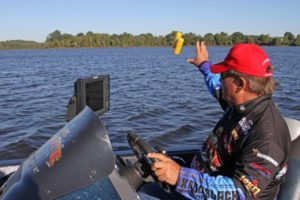
Although either option will produce, Thompson said he’s more apt to use minnows on cloudy days, while a sunny day puts more of a spotlight on jigs.
In brighter conditions, a small spoon can also produce on the edges.
Whatever you drop, Tietje advises maximum line attention because, even when the crappie are on a feed, you shouldn’t look for many jolting strikes.
“The bites are going to be lighter than when the water is warm,” Tietje said. “That’s why you need a light-action rod.”
Some like a longer rod (about 8 feet) for maximum reach, but Tietje finds he has better control with a 6-Foot light-action spinning rod.
You don’t want to overburden small baits with beefy line, but it would be a shame to dump a big slab because you went too light. In most cases, Tietje said 6-pound fluorocarbon is a happy medium.
Thompson said he expects to find crappie packed tightly for warmth, so locating a school presents a target-rich opportunity.
Depending on conditions and how recently they’ve fed, the fish can require a little coaxing. So try various jig bodies, rotate through colors and tip with minnows if needed.
The good thing is that, once you get that first fish to bite, it’s usually game-on.
“In the wintertime, it’s almost like they’re trying to warm each other,” Thompson said. “When you find them, they’ll be ganged up.
“That’s why it can be really easy to catch them this time of year.”
Related info:


